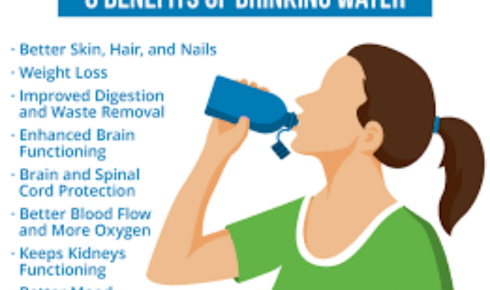There’s something oddly comforting about turning on a tap and watching clear water flow out. It’s easy to take that for granted. After all, it looks clean, it tastes fine, and it’s been that way for as long as you can remember. But here’s the thing — appearances can be deceiving. The water running through your pipes may contain invisible contaminants that slowly wear down your appliances, dull your clothes, or even impact your health. And that’s exactly why treat your water isn’t just a technical suggestion; it’s a quiet necessity for a better life.
Water, as ordinary as it seems, holds power. It touches every single part of your home — your coffee in the morning, the shower that starts your day, the dishwasher that keeps things tidy. Yet, the quality of that water decides how well these daily rituals serve you. When untreated, it can cause scaling, odd smells, and even corrosion inside pipes. Treated water, on the other hand, feels like the small luxury you didn’t realize you were missing — softer hair, cleaner dishes, fresher laundry. It’s one of those things that once you have it, you can’t imagine going back.
Understanding the Real Problem Behind “Clean” Water
Even the clearest-looking water can hide more than you’d expect. Municipal water systems work hard to meet safety standards, but that doesn’t mean your water is free from all impurities. Minerals like calcium and magnesium, while natural, make water “hard.” This leads to buildup in pipes and reduced efficiency in water heaters or washing machines. Then there are invisible threats — chlorine used for disinfection, trace metals from old plumbing, or even agricultural runoff if you’re on a well.
A simple water test can open your eyes. Many homeowners who believed their water was fine are shocked when they see the results. It’s not just about what you drink; it’s about what runs through every pipe and appliance you own. Once you understand that, investing in treatment stops feeling like an expense and starts feeling like smart maintenance.
Everyday Improvements You’ll Notice After Treatment
When you start filtering or softening your water, the changes sneak up quietly. Soap lathers better. Towels feel softer. You might notice your shower glass staying clear longer. Even your morning coffee tastes subtly better because the flavors aren’t dulled by minerals or chlorine.
The benefits of water treatment extend well beyond convenience. Over time, clean water helps extend the lifespan of household systems — dishwashers, washing machines, water heaters. Imagine cutting down on costly maintenance or replacements simply because your water runs cleaner. Plus, less mineral buildup means lower energy bills. A water heater with scale buildup works harder, and that means more electricity or gas use. Treated water, in that sense, pays you back in ways you don’t immediately see.
For families, it’s also about comfort and health. People with sensitive skin or allergies often find that softer, filtered water reduces irritation. Kids drinking from the tap are safer from potential chemical residues. Even your pets — yes, they benefit too.
The Environmental and Economic Angle
A lesser-discussed perk of water treatment is how eco-friendly it can be. Filtered water reduces reliance on bottled alternatives, cutting down plastic waste and transport emissions. Whole-home systems also minimize detergent and soap usage because soft water cleans more effectively. It’s one of those small lifestyle shifts that quietly contributes to sustainability.
Financially, while installing a system has an upfront cost, the water treatment advantages add up over time. You spend less on bottled water, fewer repair bills, and reduced utility costs. Think of it as upgrading the entire backbone of your home — the plumbing, the appliances, and even the health of everyone living under your roof.
Plus, in many cases, better water means better property value. Homebuyers increasingly ask about filtration and softening systems. In areas with hard water issues, having one can be the small differentiator that makes your home more appealing.
Myths That Still Float Around
Despite all the positives, some people hesitate to install a system because of old misconceptions. “My city water is safe,” they say — and it might be, technically. But “safe” isn’t the same as “optimal.” Others think maintenance is a hassle, yet most modern systems are surprisingly low-maintenance, often just requiring occasional filter changes.
There’s also the belief that it’s all about taste. While taste is one aspect, the real benefits go much deeper: efficiency, longevity, comfort, and even skin health. Once people experience the difference firsthand, those myths tend to dissolve faster than limescale in softened water.
Finding What Works Best for You
Water treatment isn’t one-size-fits-all. A well system might need different solutions than a city-supplied home. The good news is that technology has made it easier than ever to customize. From compact reverse osmosis units under the sink to whole-house systems that treat every drop, there’s a solution for every budget and goal.
If you’re unsure where to start, begin with a basic water test. It’s simple, affordable, and gives you a clear picture of what’s flowing through your pipes. Many companies even offer free in-home testing. Once you know the specifics, choosing the right system becomes a lot more straightforward.
Closing Thoughts: A Small Step With Big Payoffs
Water is life — it’s as cliché as it is true. Yet, how we handle that water can make a huge difference in how we live. Treating your water isn’t just about preventing issues; it’s about enhancing quality of life in the most fundamental way possible.
Think of it like upgrading your daily routine — without even realizing it, you’re making everything a bit better: your health, your comfort, your savings, and even the planet.
So next time you pour a glass of water or run your washing machine, take a second to imagine what’s really behind that flow. Because when you choose to improve what’s inside that invisible stream, you’re not just cleaning water — you’re refining the quality of your everyday life.

